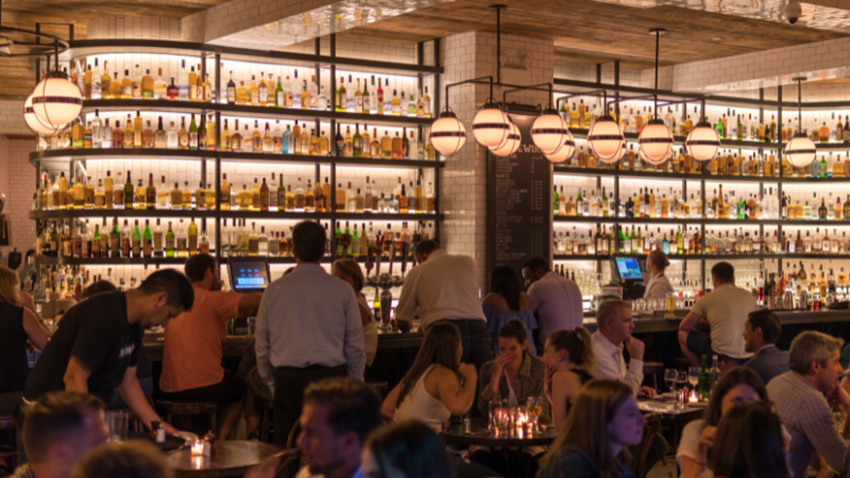
Following the UK’s Spring Budget announcement on 15th March 2023, the drinks and hospitality industry are preparing for the upcoming changes to alcohol duty – which will take effect on 1st August 2023. Draught products will receive additional relief, while duty on other alcohol products is set to rise in line with inflation.
According to WSTA, the forecast inflation rate of 10.1% is being used as the measure for increasing duty rates on all non-draught products, but will be adjusted according to alcohol content. In simple terms, the higher the alcohol per volume (ABV), the higher the new duty rate will be.
Duty Change Overview
|
|
Current Duty |
From 1st August |
Difference |
% Change |
|
Vodka > 37.5% abv 70cl |
£7.54 |
£8.31 |
£0.76 |
10 |
|
Sparkling Wine > 12% abv 75cl |
£2.86 |
£2.67 |
-£0.19 |
-7 |
|
Still Wine > 12.5% abv 75cl |
£2.23 |
£2.67 |
£0.44 |
20 |
|
440 ml Can Cider > 4.5% abv |
£0.18 |
£0.19 |
£0.01 |
8 |
|
Draught Cider > 4.5% abv |
£0.23 |
£0.22 |
-£0.00 |
-2 |
|
440ml Can Beer > 4.5% abv |
£0.38 |
£0.42 |
£0.04 |
10 |
|
Draught Beer > 4.5% abv |
£0.49 |
£0.49 |
-£0.00 |
-1 |
Source: WTSA
Duty changes in line with ABV
While some products have previously been measured on volume only – such as still wine and cider – from 1st August all alcohol products will be measured by alcohol volume or ABV.
What does this mean for beer?
Draught beer and cider products are protected by a 9.2% discount offered on items in 20ltr containers that are less than 8.5% and use a dispense system, meaning that, for example, the duty on a 50ltr 4% lager will not change.
However, the standard rate of duty on packaged beer that is 3.5% ABV and above will rise by 10.1%. This will increase the price of a 24 pack of 330ml 4.5% lager by £0.69p per case.
What does this mean for wine?
Most wine will see an increase of £0.44 per 75cl bottle, or a 20% increase in the duty paid (£2.67 vs the current £2.23). This increase will apply to wines with an ABV between 11.5% and 14.5%.
Wines with an ABV above 15% will see a duty increase of £0.97 (+44%) per 75cl bottle, and this increase gets bigger the higher the alcohol percentage – duty on fortified wines of +20% ABV will go up by £1.30 to £4.28 per 75cl bottle.
On the other hand, wine under 11.5% ABV will be treated more favourably. Duty on wine at 10% ABV, for example, will be £0.09 less than the current rate (at £2.14 per 75cl bottle).
The further abolishment of separate duty rates for sparkling and still wine means that from 1st of August, a bottle of Champagne or sparkling wine will have its duty reduced by £0.19, bringing it down to £2.67 and in line with a still wines.
What does this mean for spirits?
The standard rate of duty for Spirits over 22% ABV is also increasing by 10.1% in line with RPI. This will put the price of a standard bottle of 40% ABV up by £0.81 per bottle. There are new bandings for products with less than 22% ABV and less than 3.5% which will reduce duty vs current rates.
The WSTA have outlined the full scope of the duty changes across the category. For more information visit their website or check out the UK Government’s policy paper.
How does this affect your venue?
With these changes, we expect to see some changes to drinking habits and more consumer trends come to the fore. Despite a squeeze on household budgets, hospitality venues remain a key part of consumers’ spending habits. Research from PROOF Insight found that between March – May 2023, 26% of consumers went out to a bar, pub, restaurant at least once a week. 27% say they still plan to go out at least once a week between June and August 2023.
We are also seeing that, while people may be drinking less, they are happy to spend a little more for a better-quality drink when they do go out. Venues can cater to these treat occasions by spotlighting their premium drinks offering, through menu nods or with staff recommendations. They can also give customers a chance to explore flavours with creative cocktails and serves.
While conditions are challenging for the trade, there is good reason for optimism. A recent report from CGA found that on-premise drinks sales were 7% ahead of June 2022. Although inflation and interest rate rises will remain challenges for the sector as we move into the second half of 2023, consumer behaviour trends give us confidence that the long-term outlook for hospitality is positive.
If you have any questions or concerns about the impact of the duty changes, reach out to your Matthew Clark account manager or contact us by email.

